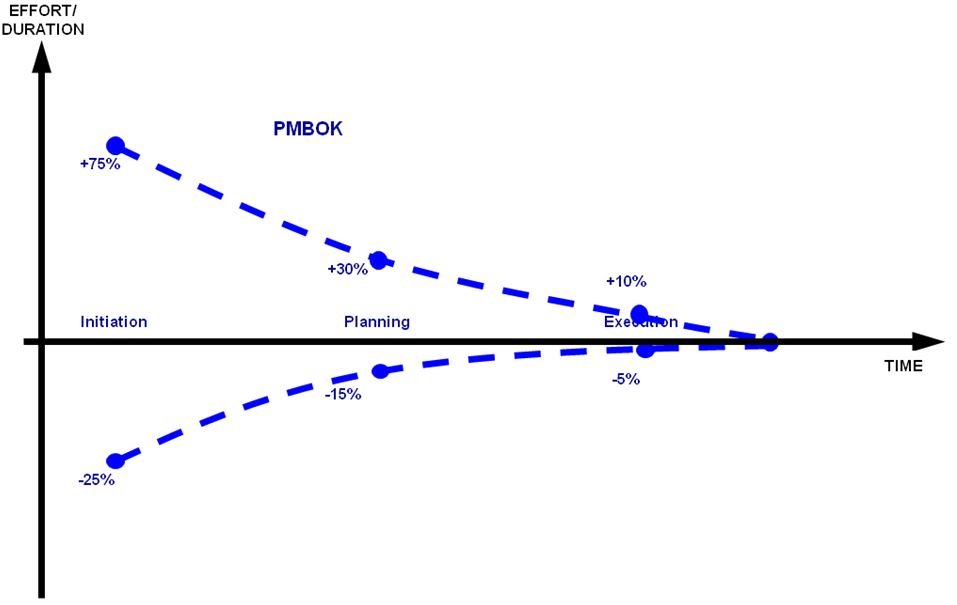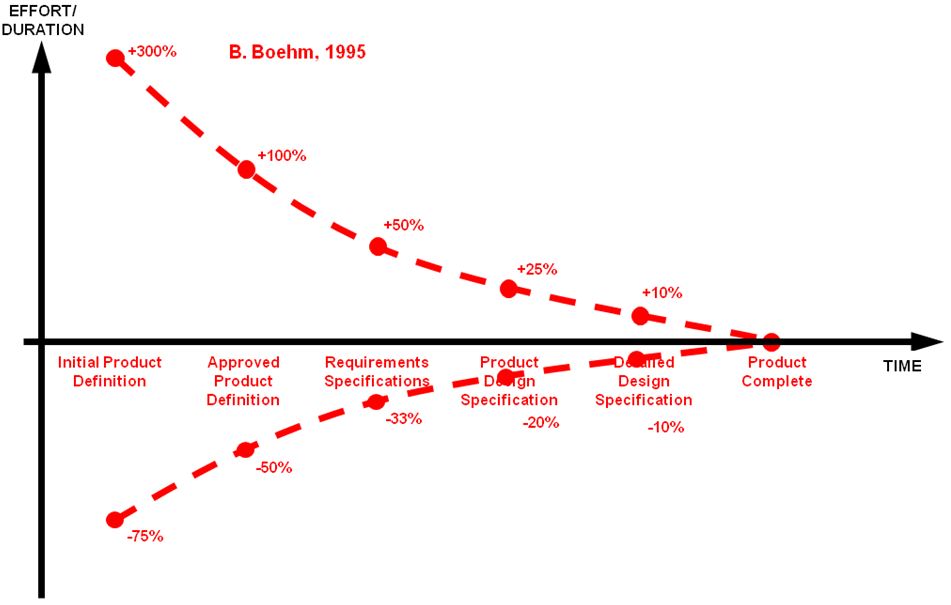Introduction
I have recently been contacted by one of my blog readers who asked me a very interesting question:
What are the estimation accuracy norms for different phases of the projects?
I found this question to be so interesting that I decided to dedicate my next posting to this particular topic. But in order to answer this question in full, let us start at the very beginning, the definition of the estimate itself.
The Definition of the Estimate
According to the Guide to the Project Management Body of Knowledge (PMBOK) published by the Project Management Institute the estimate is:
An assessment of the likely quantitative result. Usually applied to project costs and durations and should always include some indication of accuracy (+/- x percent)
Think about this definition for a while ... If we are to believe the opinion of one of the leading project management institutions in the world, then a single number, say, "9 months", "$100,000" or "350 man-months", is not an estimate. However, statements like "9+/-3 months" or "$75,000 to $125,000" are indeed true estimates.
While this fact is well-known to any experienced project manager, many executives, sales, marketing and operations professionals are frequently very surprised when this piece of information is brought to their attention.
Let us try to explore some more and find the root causes of this phenomenon.
There is Uncertainty in the Estimation Process!
We must understand that there is almost always a serious degree of uncertainty in the estimation process. Here are just some of the questions that can never be answered at the very beginning of the project:
- Out of thousands of features that will comprise the project scope will the customer want Feature A?
- If he indeed adds Feature A to the scope, will the customer want the “Honda Civic” or the “Ferrari” version of Feature A?
- If you implement the “Honda Civic” version of Feature A, will the customer later change his mind and demand the “Ferrari” version after all?
- How will Feature A be designed and built?
- How long will it take to address all the mistakes made in building of Feature A?
Since all of these inquiries cannot be clarified at the very beginning of the project, they add a considerable “white noise” factor to all of the estimates.
The “Cone of Uncertainty”
If we look up the Guide to the Project Management Body of Knowledge (PMBOK) guidelines for estimation (see Figure 1) we will discover that recommended estimate ranges are:
- +75/-25% for the Initiation stage
- +30/-15% for the Planning stage and
- +10/-5% for the Execution and Control stages
In other words if the actual cost of the project turns out to be $100,000, it is absolutely acceptable for the project manager to provide the customer with an initial estimate ranging from $75,000 to $175,000.
Figure 1
The study of IT and software companies conducted by Barry Boehm (the “father” of software economics and estimation) demonstrated the funnel for software development projects was even wider. Among other things it showed that even good software development companies were in +300% -75% accuracy range when estimating early in the project life.
Figure 2
Conclusion
So what should a project manager do when asked to provide her estimates at the different stages of the project? If you are working on a stable, fairly predictable project where most of the scope is known from the very beginning of your venture, then probably the ranges provided by the PMI in Figure 1 should become your guideline for submitting your project estimates.
However, if you are working on unstable, unpredictable project in a volatile industry and very little detail is known about the scope of your project, you want to use the boundaries described in Figure 2.
About the Author
Jamal Moustafaev, MBA, PMP – president and founder of Thinktank Consulting is an internationally acclaimed expert and speaker in the areas of project/portfolio management, scope definition, process improvement and corporate training. Jamal Moustafaev has done work for private-sector companies and government organizations in Canada, US, Asia, Europe and Middle East. Read Jamal’s Blog @ www.thinktankconsulting.ca
- Please follow me on Twitter:
- Like our page on Facebook:
- Connect with me on LinkedIn:
- Subscribe to my RSS feed:
Jamal is an author of two very popular books: Delivering Exceptional Project Results: A Practical Guide to Project Selection, Scoping, Estimation and Management and Project Scope Management: A Practical Guide to Requirements for Engineering, Product, Construction, IT and Enterprise Projects.


